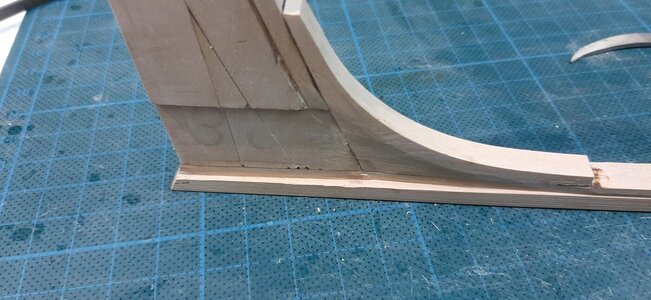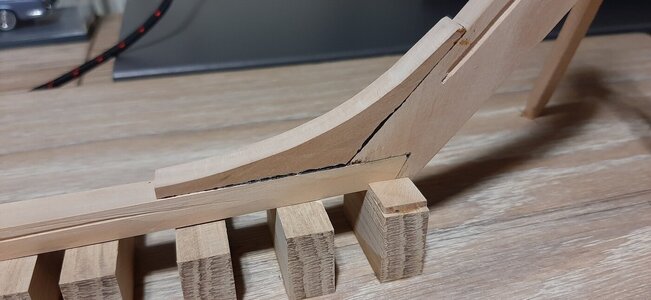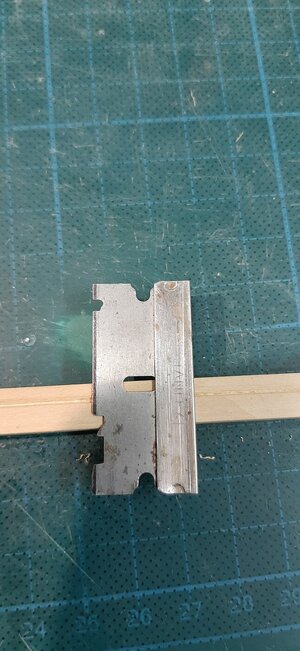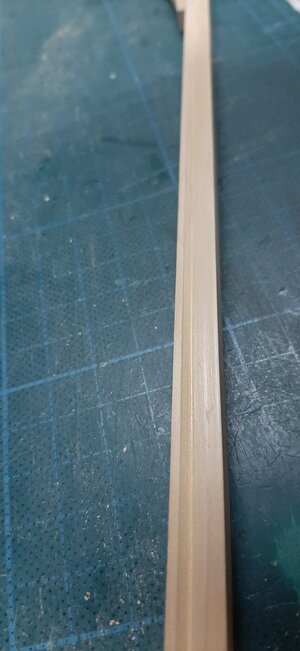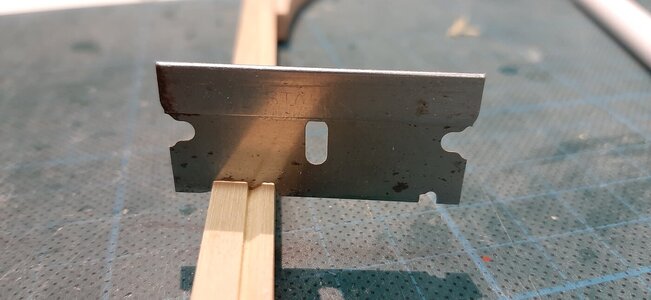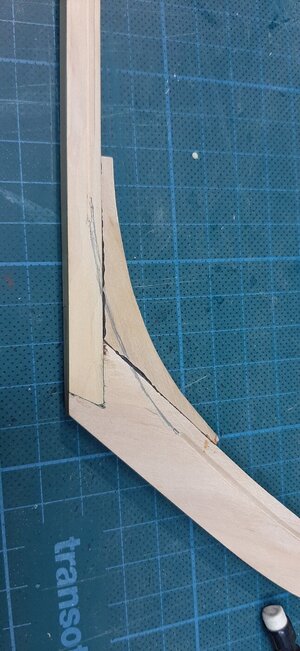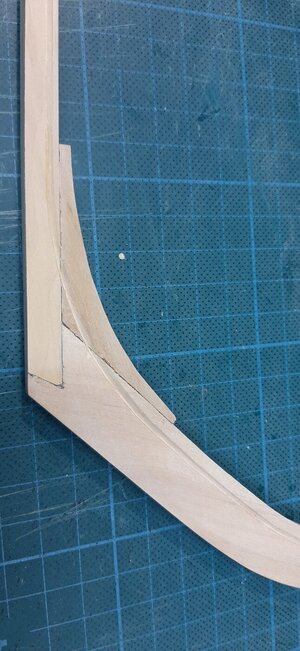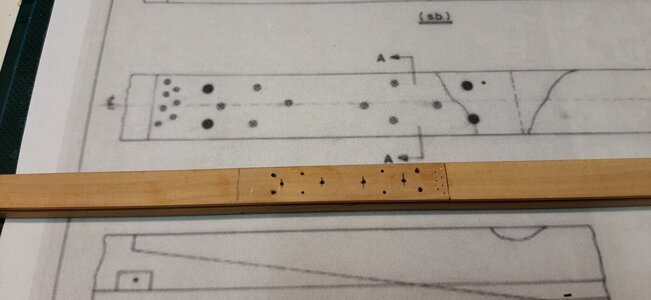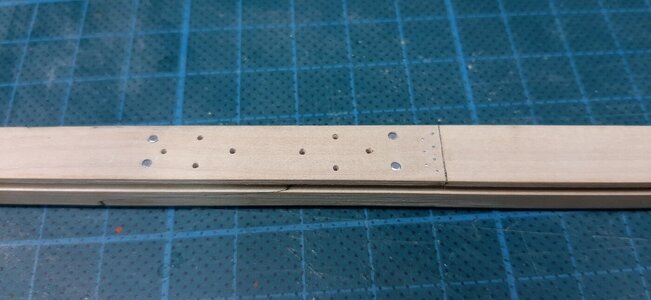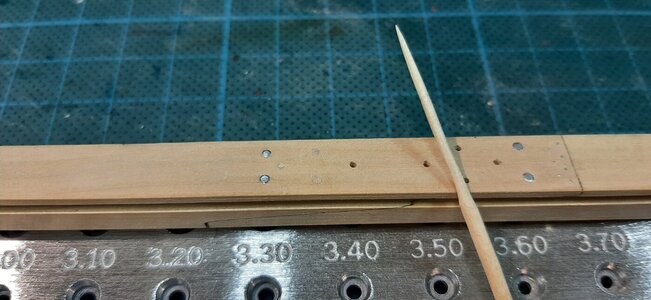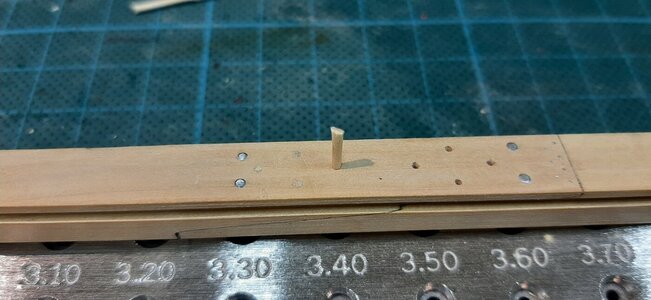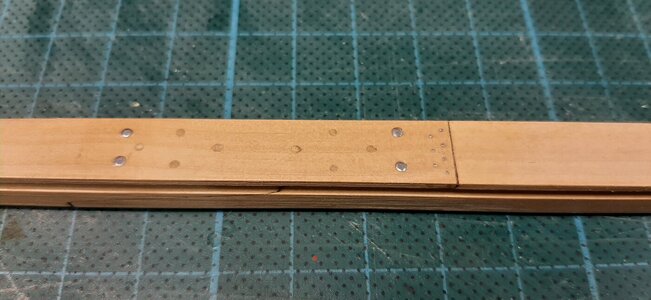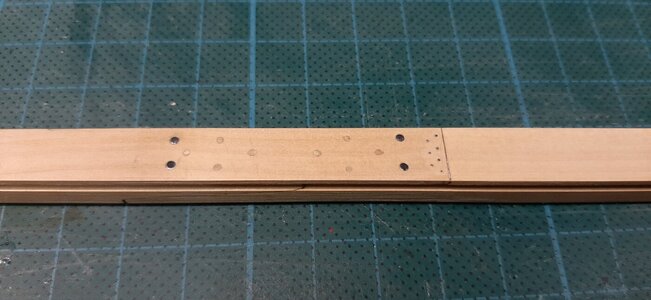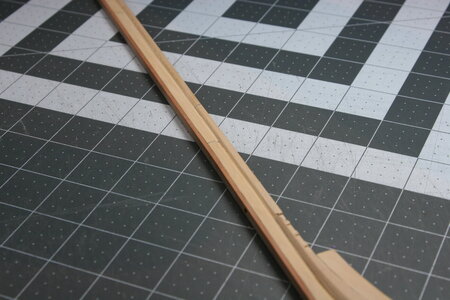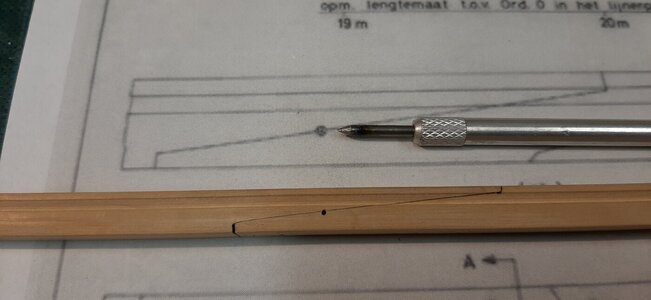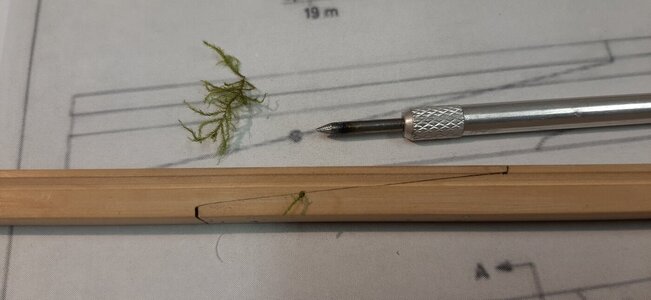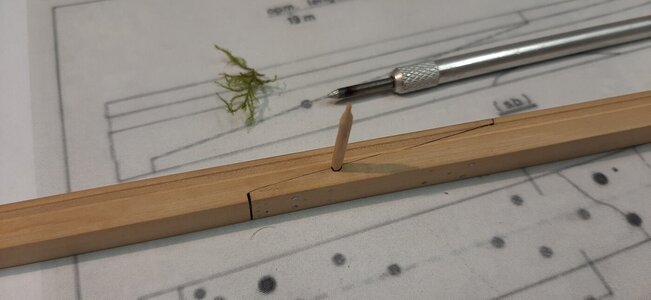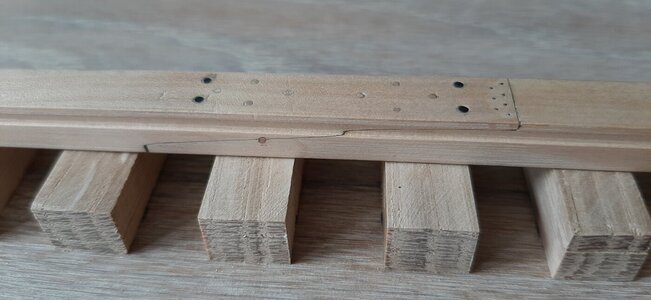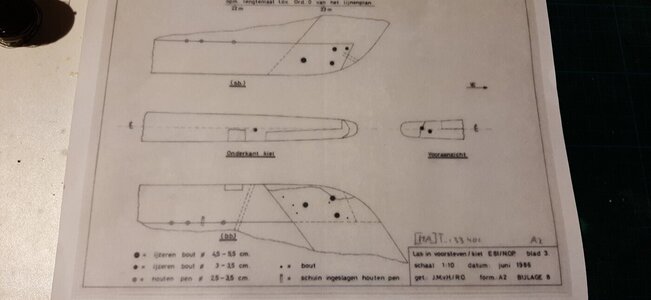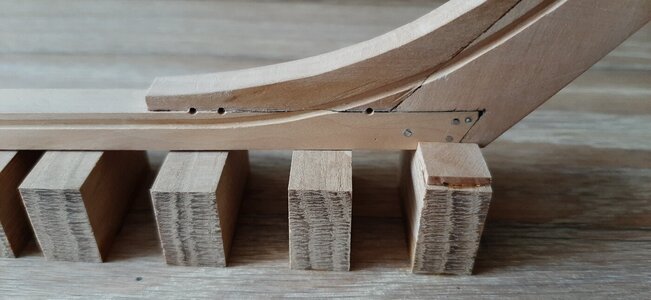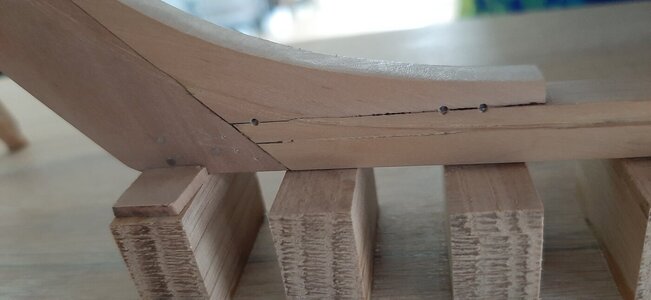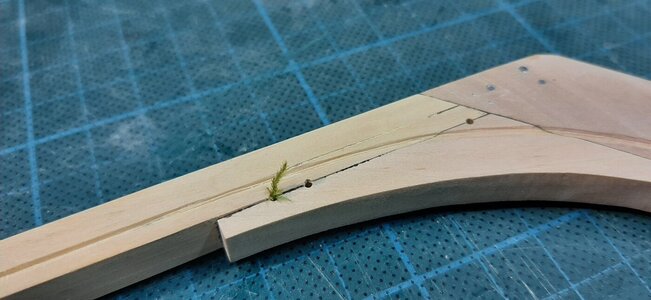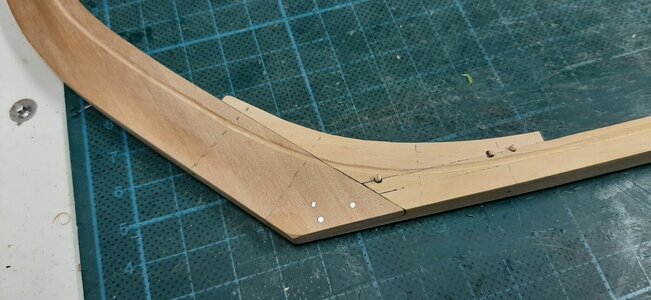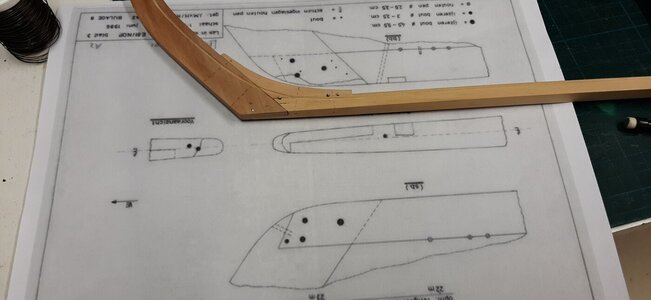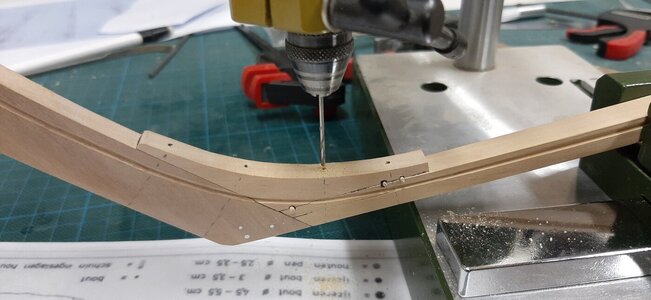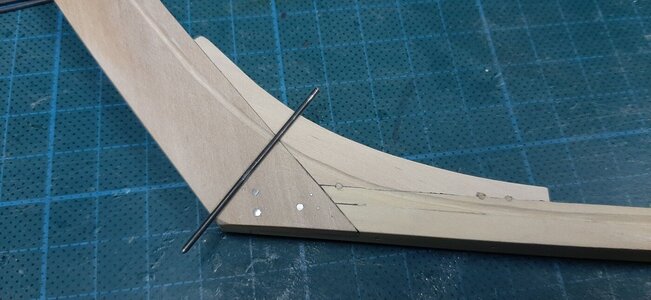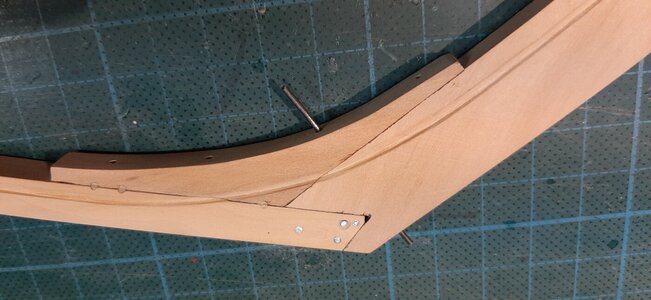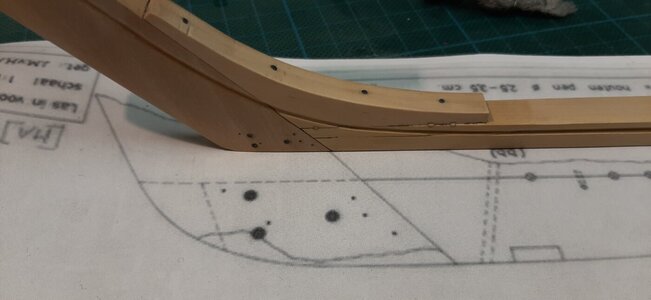Time for fitting the keel joint.
As template I use the wreck data of the Pinas Samuel of which the keel joint drawings are available.
The keel joint is fixed with 4 bolts of 2 Amsterdam inches ( Amsterdamse duimen) in diameter. 8 tree nails of 1 1/4 duim and 7 nails on each end of the joint.
In scale here bolts of 1,4 mm, treenails of 0,9 mm and nails of 0,35 mm.
All holes marked.
View attachment 372969
Bolts and treenails drilled through.
View attachment 372970
Bolts and nails fitted.
View attachment 372971
The treenails I make of birch wood sticks.
View attachment 372972
As I use them all way through the keel I fit them through a drawplate to 0,95 mm to fit the 0,9 mm hole and hammer them in place.
View attachment 372973
Sanding and a layer of Clou.
View attachment 372974
Sanding with steelwool and colouring the steel nails and bolts.
View attachment 372975

Only kidding but there's a thought for a diorama



